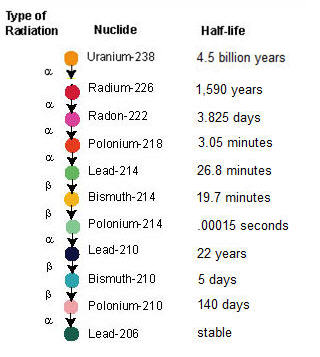Radon Decay is Deadly

Radon gas prior to decaying is a noble inert gas, meaning it doesn't interact, or bond with other atoms (or lung tissue). It is the decay chain particles, and the alpha radiation release that causes lung cancer.
When radon gas enters your home, it can decay into radioactive particles called radon decay products or progeny. These particles can attach to dust and other airborne materials that you breathe. When inhaled, they can become trapped in your lungs, where they continue to break down and emit radiation.
This radiation can damage lung tissue and increase the risk of lung cancer over time. The health risk from radon comes not from the gas itself, but from these radioactive decay products that are inhaled and remain in the lungs. The longer the exposure and the higher the radon level, the greater the risk.
Reducing radon levels in your home lowers your risk of exposure to these harmful decay products and helps protect your family's health.
The following video from the State of Tennessee gives an overview of Why Radon is Deadly:
